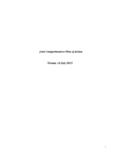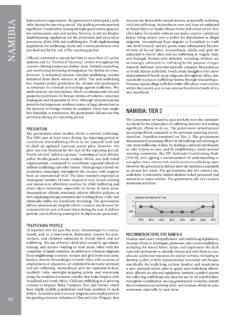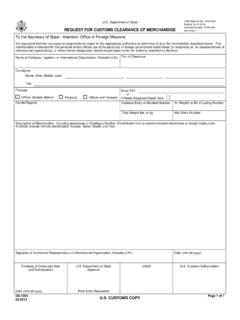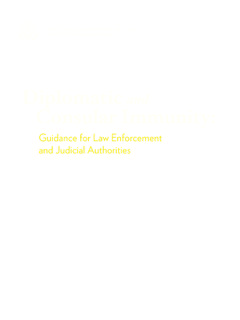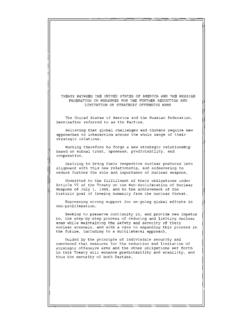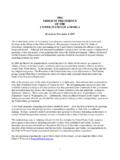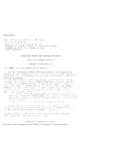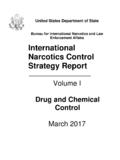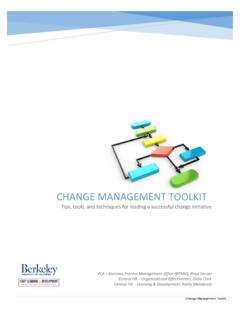Transcription of Program Design and Performance Management Toolkit
1 Program Design and Performance Management Toolkit 2 TABLE OF CONTENTS Program Design And Performance Management Toolkit Use And Navigation .. 3 Toolkit Structure And 4 Section 1: Align Programs To Advance Existing Strategies .. 7 Section 2: Conduct A Situational Analysis .. 10 Step : Ways To Conduct A Situational Analysis: .. 11 Step : Types Of Situational Analyses: .. 13 Section 3: Design A Program .. 24 Step : Develop The Problem Or Needs 25 Step : Develop Program Goals And Objectives .. 28 Step : Develop A Program Logic Model And Theory Of Change .. 30 Section 4: Manage Performance .. 39 Step : Understand Monitoring And Evaluation .. 40 Step : Develop Indicators .. 41 Step Complete The Monitoring Plan And Indicator Tracking Table .. 48 Step : Plan For Evaluation .. 51 Step : Using The Toolkit With External Implementers .. 54 Section 5: Analyze, Learn, Act .. 57 Step : Analyze And Learn From Data.
2 58 Step : Act .. 64 Step : Organize 68 Appendix .. 70 Appendix A: Design A 71 Appendix B: Design A Process .. 74 Appendix C: Blank Tool Templates .. 75 Appendix D: Data Collection 76 Appendix E: Case Example 2, Embassy Disaster Preparedness .. 80 Appendix F: Key 120 Appendix G: Works Cited .. 124 3 Program Design AND Performance Management Toolkit USE AND NAVIGATION Toolkit PURPOSE AND USE Sound Program Design and Performance Management is the basis for the effective and efficient use of State Department resources to achieve our strategic goals. Program Design details how we plan to achieve the strategic goals for a sector, region or country, and Performance Management enables us to assess the extent to which our efforts are working and why. Steps and tools provided in the Program Design and Performance Management (PD/PM) Toolkit can be applied to new and ongoing State Department programs, projects, and processes across diplomatic engagement, administration, and foreign assistance.
3 This Toolkit is designed to be applicable to all bureaus, offices, and posts and the templates can be customized to fit your needs. The PD/PM Toolkit will help bureaus, offices, and posts Design their activities in a way that effectively advances broader strategic goals, utilizes useful monitoring and evaluation, and enables learning to occur that can inform future decisions. It can be used as a manual for creating and executing a new Program , or can be employed mid- Program to determine if the effort is on track. The PD/PM Toolkit outlines the major steps of Program Design and Performance Management along with suggested tools and templates for completing each step. Completing each step will provide bureaus, offices, and posts with a Program summary as well as a Performance Management plan that can be used for knowledge Management , accountability, and to communicate about the Program internally to leadership and staff and externally to partners, implementers, or other stakeholders.
4 The PD/PM Toolkit was jointly developed by the Office of Foreign Assistance Resources (F) and the Bureau of Budget and Planning (BP). Because some State programs are coordinated with USAID, to encourage congruence and a common lexicon, concepts from the USAID Automated Directives System (ADS) are incorporated where possible. It replaces the Department s Performance Management Guidebook, Program and Project Management Guidebook, and Project Design Guidebook. 4 Toolkit STRUCTURE AND NAVIGATION The PD/PM Toolkit is divided into five sections, and within each section are multiple steps. It provides an explanation of each step, a template for implementing that step, and a fictional Program case example to illustrate a completed template. Blank templates, a second Management focused case example, and additional information about project and processes are included as appendices. While each section of the PD/PM Toolkit builds upon the previous section, they can also be used in a stand-alone fashion to support on- going programs.
5 The following icons are used throughout the PD/PM Toolkit : More about the Case Example: The case example throughout PD/PM Toolkit follows the fictional South Bureau as it develops a new clean energy Program in the fictional country of Freedonia. For each concept and tool introduced, the Toolkit provides a completed case example using this fictional Program , which is intended to illustrate the types of information you could include in the blank tool templates as they follow the instructions for each section and step. Another case example, which can be found in Appendix E, highlights Program Design for Management /infrastructure efforts. This case example follows the fictional Management office in Embassy Capital City as it develops a disaster preparedness Program for State Department personnel. Identifying Program , Project, or Process: The PD/PM Toolkit can be used by managers of programs, projects, and processes. In Section 3 of the Toolkit , project and process managers may want to turn to additional resources outside of the main Toolkit before returning to Sections 4 and 5.
6 The graphic map titled Am I Conducting a Program , Project, or Process? is intended to guide users through a series of questions to help determine if you are designing and implementing a Program , project, or a process and should make use of the additional resources (project managers are guided to Appendix A and processes are guided to Appendix B). The graphic map shows which sections of the Toolkit are applicable to programs, projects, and 6 7 Program Design and Performance Management Toolkit Section 1: Align Programs to Advance Existing Strategies By the end of this section, the reader will understand how to align programs to advance existing strategies. 8 SECTION 1: ALIGN PROGRAMS TO ADVANCE EXISTING STRATEGIES Programs can emerge in various ways. For example, some programs can be a change to existing efforts, some can be new efforts in a region or sector, and some may come with general parameters set forth by a policy or speech.
7 When initiating Program Design and before doing more detailed planning, the first step is to review the Program idea and assess how it can best align with and advance existing strategies or other high level directives. Program designers should consider which specific strategic goals and objectives the Program could ultimately help achieve, and then Design it in a way to maximize its contribution towards higher level strategy. As you begin to Design the Program , project, or process it is important to take the time to consider the bigger picture and to see how the future Program can best advance existing strategies. Aligning programs to existing strategies will help operationalize strategic documents and support bureaus, offices, or posts in meeting goals and objectives. Aligning your intended Program to existing strategies can help reduce the risk of lost time or resources as you further your strategic goals and objectives. Some important strategies and reports to consider include: Joint Regional Strategy (JRS) Functional Bureau Strategy (FBS) Integrated Country Strategy (ICS) USAID Country Development Cooperation Strategies (CDCS) Sustainable Development Goals (SDGs) Interagency policies, sector strategies, Presidential directives, commitments and guidance ( National Security Strategy) An office, bureau, or post should consider the following questions before designing a Program to support the alignment and advancement of strategic plans.
8 These questions can be used as considerations throughout Program Design and implementation to support continued alignment to strategies: How can the Program idea help achieve one or more of the FBS or JRS objectives or sub- objectives? How does the Program support the achievement of the relevant ICS(s) objectives? How does the Program concept help achieve any goals and objectives of agencies or groups outside of the State Department? Is your Program idea within the purview of your office, bureau, or post? Case Study: The President of the United States recently committed $5 million for Mary s regional bureau, South Bureau, to address the US Government priority of global climate change. Mary is leading the Design and Management of the Program that will fulfill this commitment. It is up to Mary and her team to determine how best to use these funds to address climate change; they will use this Program Design and Performance Management Toolkit to guide the process.
9 Mary started the Program Design process by reviewing existing strategies to determine how the commitment will best advance them. She reviewed her bureau s JRS and the President s Climate Action Plan. In the JRS she identified the following goal and objective: 9 JRS Goal: Decrease greenhouse gases (GHG) emissions and other climate-warming emissions through Clean Energy programs. JRS Objective 1: Build the capacity of institutions to implement low emission energy development strategies. The President s Climate Action Plan committed the United States to leading international efforts to combat global climate change and specifically addresses expanding clean energy use and reducing GHG emissions. Mary also reviewed the ICSs of the countries in the region to determine in which country(s) to implement the Program . Mary and her team determined that Freedonia s ICS objectives and sub- objectives most closely align with and will be advanced by a climate change initiative.
10 She also reviewed the relevant FBS and confirmed that clean energy is one of its goals. Mary will move on to Section 2 of the Toolkit : Conduct a Situational Analysis, to fully understand the context within which she will be developing the Program . CASE EXAMPLE: Align Program to Advance Existing Strategies Considerations List Answers How does the Program idea help achieve the goals or objectives from the relevant JRS or FBS? The Program is focused on climate change and the goals and objectives of the JRS involve reducing GHG emissions. How does the Program help achieve one or more ICS objectives or sub-objectives? The sub-objectives of Freedonia s ICS align with reducing GHG emissions thereby this Program can be designed to advance these existing strategies. Does the scope of the Program idea fit within the purview of your office, bureau, or post? Yes, as it is in South Region. But Mary s team will collaborate with the appropriate functional bureau.
